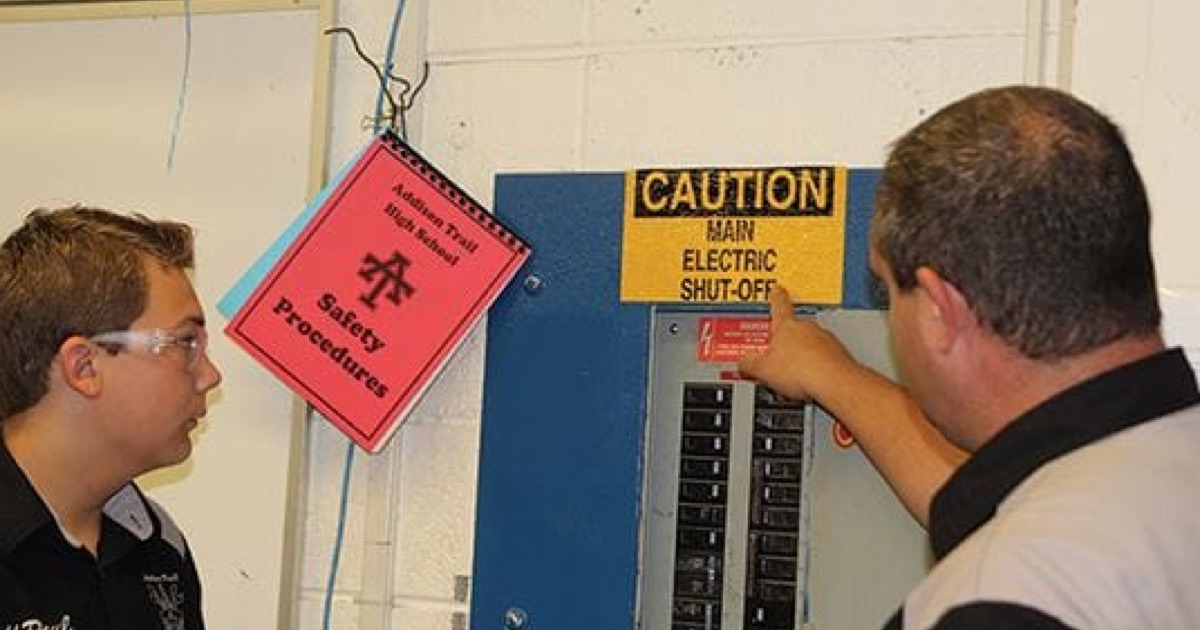In the previous post on teaching students about shop safety, we discussed how to reinforce safety practices around vehicle lifts. But do your students know what to do in the event of an accident, injury, or emergency?
As an instructor, the best thing you can do is prepare students to deal with all kinds of hazards and problems, from minor spills to injuries, in order to prevent more serious emergencies.
Your students are still learning, so you can expect them to make mistakes. However, the best course of action is always prevention. Students should be trained in all aspects of safety before working in the shop, including wearing the personal protective equipment required for a task. This also means everyone in the shop should be aware of and be able to comply with emergency procedures in the case of an accident.
Know the Shop Layout
The first time you introduce students to the shop area, familiarizing them with the layout should be a priority. This includes identifying evacuation routes and understanding what a well-organized layout should look like in order to ensure a safe environment.
Students should be aware of any activities or tasks that have clearly defined work areas and the special safety requirements associated with each.
They should also know the location of any
- Fire alarms, extinguishers, and blankets
- Emergency master electrical shut-off system
- Fixed eyewash stations or disposable eyewash packs
- This includes knowing the distance of these items from battery charge stations (be sure to check any state regulations).
- First aid kits
- Safety data sheets
Know Evacuation Routes
In the event of an emergency that requires evacuation, the last thing you want is students panicking because they don’t know where to go. It is critically important to ensure they know all evacuation routes ahead of time.
Just as the school might run through a fire drill, take the time to walk students through evacuation procedures. By the time students are ready to begin working in the shop, they should know the location of emergency exits and be able to identify clearly defined evacuation routes, including the gathering point. A gathering point is critical in making sure everyone can be accounted for. If students are missing, rescue efforts can be launched as quickly as possible.
Most importantly, remind students that they should never leave objects such as equipment, tools, parts, or supplies in front of exits or in the way of evacuation routes, fire extinguishers, and other safety equipment.
Practice Fire Safety Procedures
Teach your students the steps they can take to prevent minor accidents from becoming major issues, including being able to identify potential hazards, especially when it comes to fire safety.
Begin by reinforcing the easiest way for your students to practice fire safety: immediately cleaning up spills and not allowing flammable materials to accumulate around the shop.
In addition, students should be mindful of
- Avoiding ignition sources near flammable liquids, gases, or materials
- The potential hazards of
- Fuel vapor and other flammable gases
- Spilling flammable liquids
- Draining flammable liquids
- Storing flammable liquids
Make sure students always follow the proper procedures in order to prevent hazardous conditions and accidents.
In the event that a fire does occur, make sure students know how to operate a fire extinguisher and when and how to use a fire blanket. Remind them not to hesitate before alerting an instructor or calling the fire department.
Need help teaching safety in your automotive course?
Check out the newest edition of Fundamentals of Automotive Maintenance and Light Repair, which addresses fire safety; safety around high-voltage, high-pressure, and high-temperature systems; stop-start issues; and the new GHS hazardous materials guidelines.
